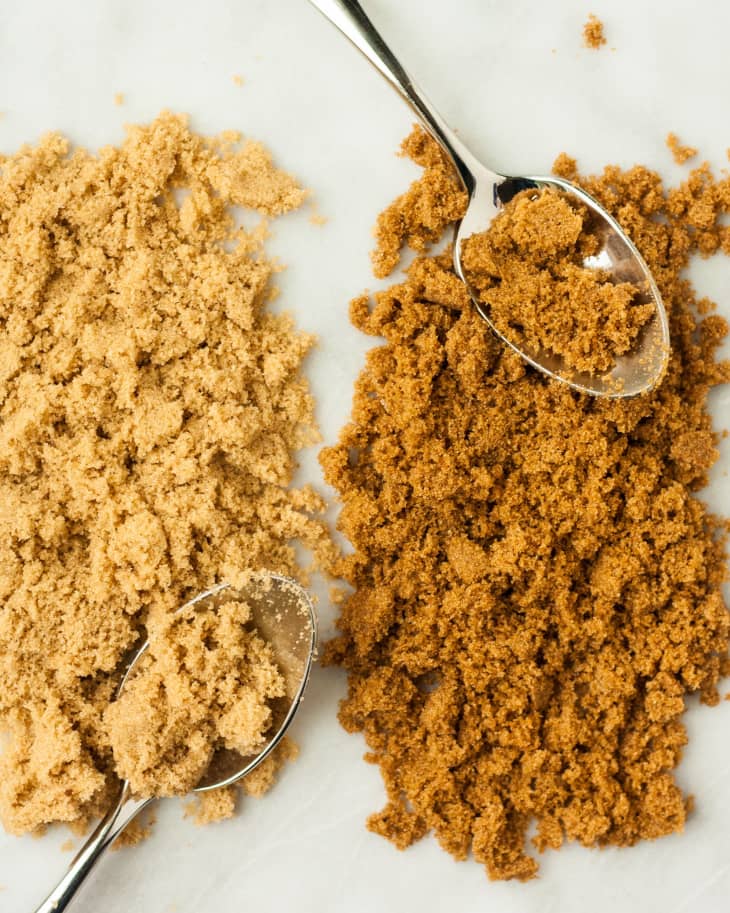Where Does the Brown in Brown Sugar Come From?
I love baking and cooking with a freshly opened package of brown sugar. I love packing it tightly into a measuring up and that oh-so-satisfying feeling I get when it flips out, perfectly molded, like sand for a sand castle.
So how is brown sugar made, and what’s the difference between light brown and dark brown sugar?
How Brown Sugar Is Made
Brown sugar is a bit of a generic term — it’s simply sugar that contains molasses, with the molasses giving it that distinctive brown color and flavor. There are two ways that brown sugar can be made:
- Unrefined or partially refined brown sugar is sugar that still contains some molasses from the original sugar refining process. It can be labeled factory, raw, natural, turbinado, demerara, and muscavado, among other names, depending on origin and the refining process. These sugars may not be as soft and moist as more refined brown sugars.
- Refined brown sugar is made by adding molasses back to refined white sugar. This is the commercial brown sugar that is soft and moist and what is commonly thought of as brown sugar, so we’ll focus in on this type and how it’s used.
Light vs. Dark Brown Sugar
Recipes will sometimes specify dark brown or light brown sugar, so what’s the difference? It’s simply the amount of molasses in it:
- Dark brown sugar contains about 6.5% molasses.
- Light brown (or sometimes labeled golden brown) sugar contains about 3.5% molasses.
How Moisture Affects the Texture of Refined Brown Sugar
Brown sugar is naturally moist and soft because of the thin film of molasses that covers each sugar crystal. If the moisture in the molasses evaporates, however, the sugar hardens into one mass, so it should always be sealed in an airtight container to prevent moisture loss.
But the nice thing is that molasses is also hygroscopic, which means that it readily absorbs moisture. This means that if your brown sugar has hardened, you can seal it with bread or an apple so the molasses can steal and suck up its moisture to soften the brown sugar again!
Brown Sugar Softening Tips
Cooking and Baking with Brown Sugar
Molasses is the key flavor in brown sugar, so dark brown sugar has a richer, more caramel-y flavor than light brown. If your recipe does not specify which kind of brown sugar to use, you can probably use whatever you have on hand, but pick the one you think is better suited to the recipe. If you want deeper flavors, go with dark brown, but if you don’t want the molasses to overpower the other flavors in the recipe, go with light.
